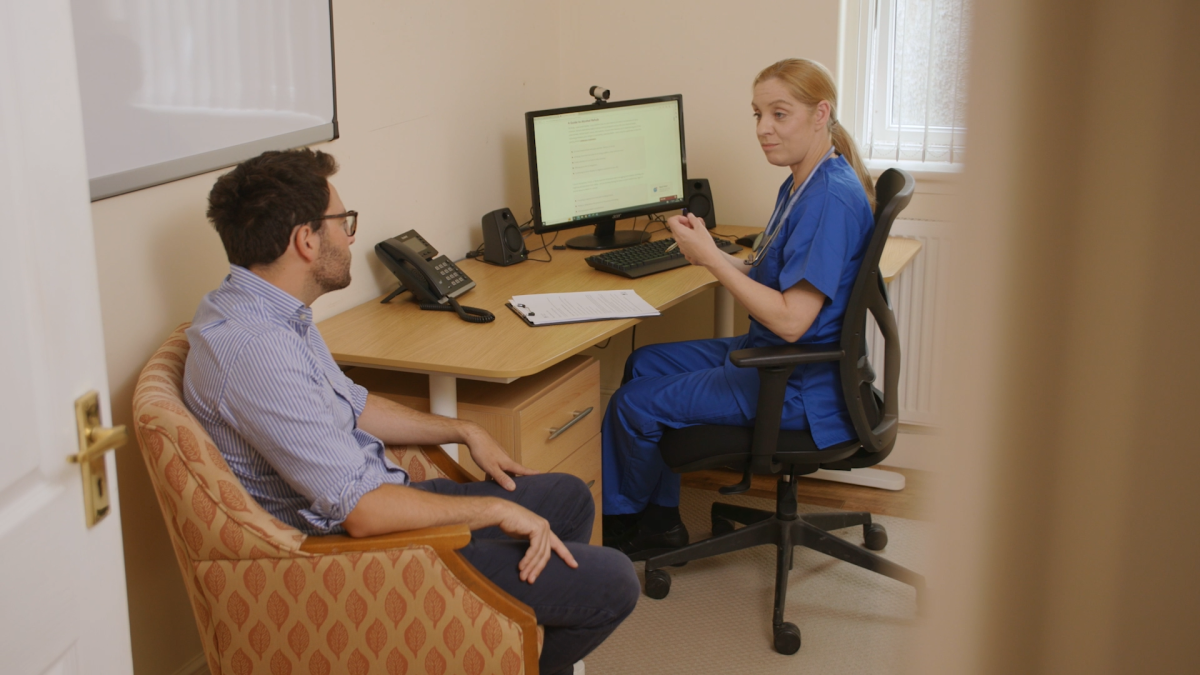When you are living with addiction, it is not always easy to know what type of treatment is best for you. At Castle Craig, we can help you make a decision that can guide you towards a life of sobriety, where recovery from addiction is not just a hope, but a reality.
Treatment comes in different forms, depending on whether your main addiction is to alcohol or drugs. The first stage of treatment is a thorough medical assessment to see whether you might need medication to ease withdrawal symptoms. Not everyone will experience withdrawal symptoms severe enough to need medication. If medication is considered to be the safest option, a medically assisted detox is provided with close monitoring and support from our team of health professionals. At Castle Craig, our medical and nursing detox specialists are highly skilled in both alcohol detox and drug detox so that withdrawal symptoms are kept to a minimum. You can even start taking part in therapy sessions during detox if you are physically able to, with access to focal therapists. What might at first appear as an overwhelming journey into the unknown will soon become a safe passage to residential rehab.
As part of rehab at Castle Craig, even if you have undergone detox, we believe that abstinence-based treatment is the most effective way for you to achieve sobriety. It is important you know that this is not the only type of treatment available. Another approach is called medication-assisted treatment. Knowing the difference between abstinence-based and medication-assisted treatment will help you understand why the abstinence-based model is one we have adopted as part of our rehab programme.

Download Our Brochure
What is Medication-Assisted Treatment?
Medication Assisted Treatment (MAT) refers to the medication that is prescribed to assist with recovery and reduce the risk of relapse back into addiction. For alcohol addiction, medication is used during abstinence to help reduce cravings and make drinking a less pleasant experience. For opioid addiction, medication is taken by mouth and acts as a substitute for the previously used drug. You should be aware that all medication carries risks.
Anti-Craving Medication for Alcohol Addiction
It might appear confusing, but for alcohol addiction, medication can still be used as part of treatment during abstinence. Although this can still be termed medication-assisted treatment, this term is usually reserved for opioid addiction. Anti-craving medication can still be part of an abstinence-based model as this medication does not take the form of a substance such as alcohol or drugs.
There are three main types of medication prescribed to treat alcohol addiction, each one acting in a different way to help maintain abstinence
- Acamprosate reduces the brain’s sensitivity to a brain chemical called glutamate. Glutamate levels increase during alcohol withdrawal, bringing about the need to drink to relieve withdrawal symptoms. By reducing the brain’s reaction to glutamate, withdrawal symptoms are less severe, thereby breaking the cycle of relief drinking. Side effects of acamprosate include diarrhoea, itching, skin rash, and reduced sex drive
- Disulfiram blocks the breakdown of alcohol by-products into less toxic compounds. It leads to a build-up of a compound called acetaldehyde, which is produced from the breakdown of alcohol, so that the unpleasant effects of this breakdown product are experienced after drinking. These effects include nausea, facial flushing, sweating, and a rapid heartbeat. Side effects from disulfiram itself include drowsiness, a metallic taste, skin rash and headache. It is prescribed under close medical supervision, as it may have more serious side effects such as nerve damage, mood changes and a risk of liver damage
- Naltrexone blocks brain receptors that produce the euphoric effects of alcohol, with a less pleasurable effect experienced after drinking. Side effects of naltrexone include nausea, headache, dizziness, sleep problems, tiredness and muscle or joint pain
- Nalmefene is also used in medication-assisted treatment and acts similarly on the brain to naltrexone, with the same side effects
Research has shown that acamprosate and naltrexone are the most effective medications for maintaining abstinence from alcohol. During rehab, our medical team can guide you in whether any of these drugs would be of benefit as part of your treatment plan.

Substitution Treatment for Opioid Addiction
As mentioned above, medically-assisted treatment involves the prescription of opioids used in place of the drug of addiction and is commonly known as Opioid Substitution Treatment (OST). Opioids are a group of strong painkillers that include prescription drugs such as codeine, morphine and oxycodone; as well as illicit drugs such as heroin and fentanyl. As OST replaces one opioid with another, there is still a risk of addiction and withdrawal with the substitute opioid. Although there are fewer risks from reduced injection of opioids such as blood-borne viruses and other health risks, there is also still a risk of overdose from OST.
- Methadone is a long-acting synthetic opioid that acts in a similar way to morphine. As an opioid, in addition to its effect as a painkiller, it still produces euphoria. Although methadone is used to reduce the risk of heroin addiction and withdrawal symptoms, only around 1 in 33 people who are prescribed methadone maintenance treatment achieve at least 90 days of abstinence from opioids. Strange as it may seem, rather than being of benefit in reducing heroin use, methadone can increase heroin cravings. Side effects of methadone are the same as for other opioids and include headache, drowsiness, weakness, nausea, sleep problems, skin rash, itching, appetite loss, mood changes, difficulty passing urine, sleep problems and headaches. In larger doses, methadone causes risks seen with all opioids, including slow breathing, and slowed heart rate. There is a growing trend of deaths from methadone. In Scotland between 2019 and 2020, there was a 25 per cent increase in the number of deaths from methadone, with methadone implicated in 53 per cent of all drug related deaths
- Buprenorphine is a long-acting synthetic opioid that acts differently to other opioids in that although it interacts with the same brain receptors as opioids, it does not activate them fully, which means that it does not have the same euphoric effect as methadone and prevents other opioids from producing this effect. Although this can improve treatment outcomes, only around 1 in 5 people remain in treatment after 6 months of treatment with buprenorphine. Side effects of buprenorphine include mood changes, diarrhoea, tremors, fatigue, dizziness and sleep problems. As with methadone, there is a trend of a growing number of deaths from buprenorphine with a 10-fold increase In the number of deaths in Scotland from 2010 to 2020.




What is Abstinence-Based Treatment?
Abstinence is the cornerstone of true recovery, with the opportunity to set you free from your addiction. Our structured foundation programme is between 5 and 6 weeks but you may need between 6 and 12 weeks longer to complete our advanced programme, particularly if you have experienced significant trauma, have had a long period of drug withdrawal, live with another mental disorder or you need more time to develop resilience. For our abstinence-based rehab programme, the outcomes speak for themselves. In a group of patients who received our treatment programme in 2015, over 70 per cent reported total abstinence at 1-year follow-up. A further 20 per cent said that they had reduced alcohol or drug use.
With the `goal of abstinence in mind, several important components make our treatment programmes unique
- Group therapy for mutual peer support
- One-to-one therapy from focal therapists using treatments such as CBT, DBT and EMDR
- 12 Step Minnesota model
- Psycho-educational lectures
With this intensive rehab structure, building resilience and hope will not only mean better mental and physical well-being but also reduce the likelihood of relapse into a life of addiction. You deserve no less.

Over 10,000 people have achieved sobriety with Castle Craig. Join them
What Does Research Tell Us About the Most Effective Treatment Model?
The 2006 Drug Outcome Research Study of over 1000 people in Scotland living with drug addiction found that 30% of those who had gone through residential rehab were abstinent at 90 days, which was 10 times higher than those who had received methadone as part or medication-assisted treatment. A more recent study of 107 participants, some of whom had been patients with us at Castle Craig, identified the 12-step model of treatment as having the biggest influence on their decision to remain abstinent from heroin.
We pride ourselves in having adopted an abstinence-based treatment model that is underpinned by a strong evidence base for maintaining sobriety following completion of residential rehab. Long-lasting recovery can only happen when we have confidence in our treatment model. We also have the research to back it up.

